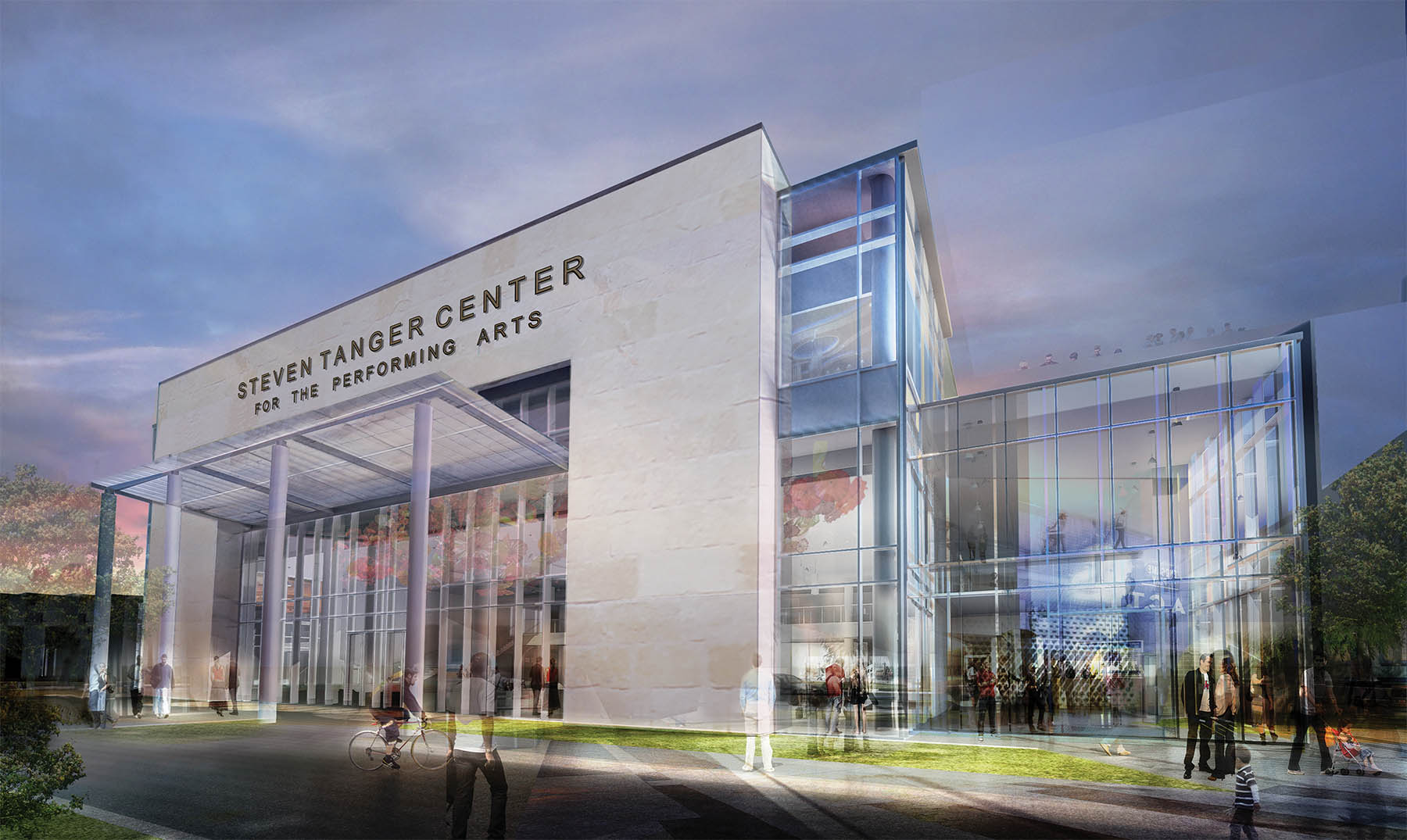
For the Gate City, the ’20s are set to roar
By Margaret Moffett
Midsummer, like clockwork, it begins — the rat-a-tat-tats and oompahs and wah-wha-whas floating across east Greensboro, teasing autumn’s arrival.
“It,” of course, is the N.C. A&T State University Blue and Gold Marching Machine, a drum-banging, horn-tooting, whistle-blowing wall of sound that high-steps through half-times of Aggie home games several Saturdays each fall.
Year after year, the band starts preparing for football season around July, when air conditioners run without ceasing and even the evenings leave you hollow-eyed and sweat-soaked.
Ask anyone who lives within a mile or two of campus — from Dunleath to downtown, East Bessemer to East Market. Ask them about the time they sat on breezeless breezeways, or opened their windows in the middle of a heat wave, just to hear The Machine practice. Not perform, mind you. Practice.

They’ll tell you it was worth it. So worth it.
This is a small thing. Impactful, yes, and also delightful. But small.
Greensboro is home to a thousand small things. The lighted Christmas balls in Sunset Hills. The hippie scene on Tate Street, unchanged since 1969. The dogs that chase fly balls at Greensboro Grasshoppers games. The Eastern freaking Music Festival.
Combined, they constitute the je ne sais quoi that is Greensboro. Woe betide any newcomer or visitor who scoffs at our je ne sais quoi:
“OK, maybe we don’t have a Trader Joe’s or a world-class auditorium,” we would snarl — obviously in the pre-Trader Joe’s/Tanger Center for the Performing Arts era. “But we re-enact the Battle of Guilford Courthouse here all the dang time. Plus our community swim meets are fierce. Oh, and Safety Town. Bet your kids didn’t go to Safety Town (clearing our throats for compulsory recitation of Greensboro’s unofficial motto). “This is a great! Place! To live!”
For years now, we have clung to small things as proof of this city’s worth. But they don’t fit neatly on marketing materials or land us on lists of Best Cities in America. The ice skating rink at LeBauer Park is all well and good to a Fortune 500 company looking for a new headquarters. Its leaders, however, would much prefer a robust economy and low unemployment; an entrepreneurial spirit and an energetic workforce; a youthful culture and a vibrant downtown.

They’re looking for big things. And big things have been missing from Greensboro’s narrative for far too long.
But the times they are a’changing. Over the course of 2020, the city is set to blossom like a Greensboro red camellia (It’s our official flower. Look it up.)
In the first quarter alone, the Greensboro Coliseum will host the U.S. Figure Skating Championships, the women’s and men’s ACC basketball tournaments and first-and second-round games in the NCAA basketball tournament. The $90 million Tanger Center on the eastern tip of downtown will open sometime amid March Madness.
As the year unfolds, we’ll be treated to one of the busiest periods of construction and revitalization in the city’s history. That means more luxury apartments and boutique hotels. More office towers and mill renovation projects. More cool entertainment districts and cultural pop-up events.

You know, you almost could make the argument that this city is poised for a rebirth.
Aw, heck, let’s just go ahead and call it:
Greensboro is back.
***
Shall we take a moment to recount the Dark Days?
Quickly summarized: Textiles and tobacco began their slow marches to death in the mid- to late-1990s. Then came 9/11, followed by a brief economic resurgence, followed by the Great Recession.
Greensboro lost more and struggled longer than other progressive Southern cities, which seemed to more easily be replacing the high-paying manufacturing jobs lost to overseas competition and recovering from the disintegration of entire industries.
In North Carolina’s third-largest city, however, tobacco farmers and textile workers found themselves at the mercy of a service economy that offered lower wages and reduced benefits. Unemployment rose and median income fell. Corporate headquarters moved and longtime businesses folded. Developers delayed projects, or axed them altogether.

Greensboro was depressed. And depressing.
Robbie Perkins had a front-row seat for the downturn — as a nine-term member of Greensboro City Council, including a turn as mayor from 2011 to 2013; as a commercial real estate developer who struggled to close eight-figure deals at the height of the crisis; and as a resident of four decades who was emotionally and financially invested in the community when it was at its most robust.
“This city got hit really hard,” he says. “People who lived here and slogged their way through it don’t realize it as much as people from the outside.”
One thing he knows for sure: “We’re better now than we were. A lot better.”
And then some. Median household income is on the rise — finally — as is the promise of better-paying jobs. Young people are sticking around a little longer. Exciting projects are beginning to gel. New industries have emerged. Vitality has returned.
For proof, look no farther than our burgeoning aerotropolis. About 5,800 people work in and around Piedmont Triad International Airport — roughly 1,500 of them at the world headquarters of HondaJet. Perkins notes the aviation economy is prompting an unprecedented surge in nearby development. Even as we speak, workers are grading 700 acres here and there around the airport, perhaps for future distribution and logistics operations, or maybe retail and office construction.
He’s expecting the N.C. 68 corridor to pop sometime this year.
Then there’s the Publix distribution center, which Perkins promises will have “a substantial benefit to Greensboro.” Around springtime, the Florida-based grocer will start building a $400 million warehouse for 1,000 workers, whose $44,000 annual salaries will surpass the city’s median earnings.
Perkins goes on to praise Greensboro’s emerging downtown and incredible infrastructure. Plus, our universities will collaborate on projects like the Joint School of Nanoscience and Nanoengineering — and even relocate some functions to the Center City, as they did with the Union Square Campus.
So sayeth Robbie Perkins: “It’s all going in the right direction.”
***
If Perkins is correct that people outside Greensboro best recognized our economic malaise, then perhaps the reverse is true:
It takes someone with perspective to recognize our renaissance.
Enter Denise Turner Roth, a former city manager who left town in 2014 to work for the Obama administration. As the General Services Administration’s No. 1, she managed 12,000 federal employees, oversaw a $20 billion budget and travelled to just about every major metro in these United States.
Upon moving back to Greensboro with her family in 2018, Roth immediately spotted the most noticeable — and to hear her tell it, the most significant — upgrade made in her absence.
There’s street art everywhere. On buildings and parking lots, storefronts and retaining walls.
“I thought it was an explosion of energy,” she recalls. “The colors jumped off and caught my eye. They made me want to stop and investigate.”
Most of the murals come courtesy of developer Marty Kotis, who has commissioned more than 100 pieces on buildings he owns across the city. City leaders followed Kotis’s lead, cataloging all of the city’s public art on a webpage — even relinquishing an old water tank at the Mitchell Water Plant to become an artist’s canvas.
Roth found it added an edgy, exciting, unexpected je ne sai quoi to the Gate City — the sort of quirky edge she noticed among other hip cool cities she visited as GSA administrator.
“This is it,” she remembers thinking. “This is what Greensboro needs to be.”
Here’s why: If the city is to maintain its forward momentum, we must — What’s the right word? — mesmerize? captivate? beguile? Millennials and Gen Z’ers. Period. End of argument. They’re every successful urban area’s economic engine, not only as innovators and entrepreneurs, but also as homebuyers and consumers.
On that front, too, Greensboro has gained ground. You can see it in the way downtown comes to life after midnight on Friday and Saturday nights.
And in the sudden explosion of breweries and distilleries near Center City.
And in the popularity of Boxcar, a combination bar and arcade on Lewis Street that’s packed with college students craving dollar mimosas and Dance Dance Revolution SuperNOVA (yes, it’s a thing) on Sunday evenings.
Since Roth’s exit and return, the city has opened two skate parks, a long sought-after amenity in street-punk chic. And UNCG basketball, now experiencing its own renaissance, has become a popular, inexpensive hang for students and alums.
But Greensboro’s menu now offers something Millennials and GenZ’ers need more than microbrews and games: opportunity. Take LaunchLab, a business accelerator program provided by the Greensboro Chamber of Commerce. The program pairs its startups with college interns from the city’s seven colleges and universities, doing both parties a solid. Another small business incubator, the Nussbaum Center for Entrepreneurship, offers budding business owners everything from coaching and office space to financial assistance.
And 2020 promises more of the Wow Factor 20-somethings demand.
Sometime this year, a new six-story Hampton Inn & Suites will open downtown, joining a Hyatt Place that welcomed its first guests in 2019 — and Westin and Aloft hotels are in various stages of development.
Also opening soon: a 188-unit upscale apartment complex — Hawthorne at Friendly — that’s so close to Friendly Center that residents will be able to smell the salmon patties cooking at K&W Cafeteria.
And later this year, redevelopers will finish a $54 million project bringing 200-plus apartments to the old Proximity Printworks Mill — just a hop across Yanceyville Street from the previously rehabbed Revolution Mill. That’s in addition to the nine-story, 111,000-square-foot office building set to open at the Greensboro Grasshoppers’ baseball stadium.
What was that we said about a deficit of “big things” filling Greensboro’s narrative? About fixating on “small things” to distract us from our economic unpleasantness? Meh, that’s so 2008. No, this is a city reborn, a city on the . . . Wait. Is that “Smells Like Teen Spirit” we hear coming from the general vicinity of N.C. A&T State University? Is the Blue and Gold Marching Machine actually playing Nirvana?
Cool. OH
A graduate of UNCG, Margaret Moffett has called the Greensboro area home since 1985. After 27 years career as a newspaper journalist, she embarked on a career as a freelance writer and adjunct instructor of journalism at UNC-Chapel Hill. She resides in Dunleath in a 100-year-old house with her two cats.





